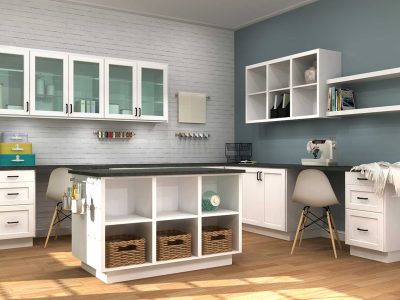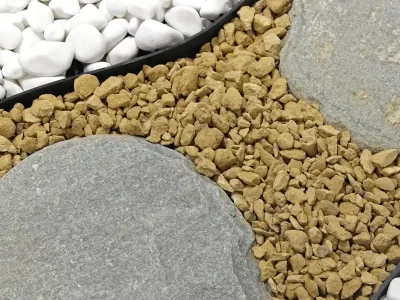Oak Forest homeowners tackling remodels, cleanouts, and seasonal projects are rethinking how they manage waste this year. Instead of juggling multiple trips to the landfill or overflowing curbside bins, more residents are opting for roll-off rentals that streamline debris removal from day one. The appeal is simple: faster loading, safer job sites, and reliable pickup windows that match real home schedules. If you’re comparing options, Check Now for availability and sizing so you don’t overpay or overestimate. Local demand has also increased as more people search for an “Oak Forest Dumpster” that’s driveway-safe and suitable for mixed materials, from lumber to old furniture. This guide breaks down why these containers fit the way people live and renovate in 2025.
Roll-Off Designs That Simplify Home Renovation Cleanup
Well-designed roll-offs take the friction out of debris removal, especially during high-traffic days of a renovation. Modern containers often sit lower to the ground with swinging doors so you can walk in large items instead of hoisting them over the side. That detail alone can cut loading time and protect your back during repetitive trips from the work area. Many units also include driveway-safe wheels and boards for placement, preserving your concrete or pavers during a busy remodel. In older Oak Forest neighborhoods with tight driveways, that placement flexibility can be the difference between a smooth project and a scheduling headache.
Features That Make Loading Faster and Safer
- Walk-in doors allow ground-level loading, so heavy appliances and bathtubs don’t require risky lifts.
- Low-profile sides reduce reach height, making it easier to toss in lighter debris like drywall and cardboard.
- Driveway protection options (mats or boards) minimize the risk of scuffs and scratches on finished surfaces.
- Weather-resistant covers or tarps help keep rain out, preventing needless weight that can increase disposal costs.
- Compact footprints fit many suburban driveways, avoiding the need for street permits in some cases.
Beyond convenience, design choices also help keep materials separated when needed. Some providers offer guidance on layering or partitioning debris so items destined for recycling don’t end up buried beneath mixed waste. A clean load of concrete or metal, for example, can be handled more affordably and responsibly than a heavily mixed bin. That kind of guidance, combined with a correct size selection, gives homeowners more control over costs and outcomes. If you started your planning with an “Oak Forest Dumpster” search, you’ll likely find designs that anticipate common renovation obstacles and address them upfront.
Container Options That Fit Different Waste Volumes
Choosing the right container size is where many projects either save money or lose it. Most residential jobs fall into predictable categories, with 10-yard roll-offs handling bathroom remodels or attic cleanouts and 20-yard options covering mid-size renovations. Larger 30- or 40-yard containers are best for whole-home flips, multi-room gutting, or major landscaping overhauls with stumps and soil. Getting the size right helps you maintain speed—too small and you risk overflow or swap fees; too large and you’re paying for air. If you’re unsure, Check Now with a local dispatcher to compare typical loads for similar projects in Oak Forest.
How to Estimate Your Volume Accurately
- 10-yard: Ideal for small bath remodels, flooring replacement in one or two rooms, or tight garage cleanouts.
- 20-yard: Suited for kitchen renovations, deck removals up to about 300–400 square feet, or multi-room junk removal.
- 30-yard: Works for larger additions, roofing tear-offs on bigger homes, and full basement cleanouts.
- 40-yard: Best for major home overhauls, estate downsizing, or large storm recovery work with mixed materials.
Local rules and weight limits matter, too. Dense materials—like tile, concrete, brick, or roofing shingles—may hit tonnage caps quickly, so a provider might recommend a smaller container with multiple swaps instead of a single oversized bin. The right “Oak Forest Dumpster” should come with clear guidance on what can be loaded, how to distribute weight, and when it’s worth scheduling a mid-project swap-out. If you’re combining demolition and new material deliveries over the same week, consider a slightly larger size to avoid last-minute constraints. That buffer can keep your job moving without adding more trips to the calendar.
Flexible Pickup Schedules for Busy Households
Home projects rarely follow a perfect timeline, and dumpster schedules need to bend with them. Many providers now offer adaptable delivery and pickup windows—early morning drops, weekend swap-outs, and next-day removals—aimed at households juggling work, school, and contractor appointments. When a project accelerates and fills the container faster than expected, a quick swap can keep crews productive and reduce downtime. Likewise, if a week is going sideways, extending your rental by a day or two can prevent rushed decisions that lead to safety risks or extra fees. Responsive scheduling is as important as size selection, because time saved in pickup coordination translates into a smoother project overall.
Real-World Scheduling Scenarios That Help
- Midweek demo wrap-up: Schedule a Thursday swap-out so the site is clear for weekend remodeling.
- HOA restrictions: Coordinate a morning pickup to avoid overnight street parking rules or quiet-hour constraints.
- Rain delays: Extend your rental by two days to protect materials and avoid loading water-soaked debris.
- Big-item day: Time delivery for the day appliances or cabinets come out so you’re not double-handling heavy pieces.
Clear communication is the bedrock of flexible scheduling. Look for providers that send text confirmations and share day-of driver updates, especially if you’re working around tight driveway access or a narrow alley. When you talk through timelines with your provider, note city pickup restrictions, school bus hours, or any shared-driveway coordination with neighbors. That planning minimizes conflicts and clears the way for efficient loading sessions. Homes that adopt flexible pickups tend to minimize stress—and they stay safer because piles don’t linger on the ground.
Eco-Friendly Disposal Supporting Local Sustainability Goals
Sustainability goals in Oak Forest are becoming more tangible, with residents expecting smarter waste handling from every home project. Roll-off providers are responding by offering guidance on sorting, recycling, and reuse so debris avoids the landfill whenever practical. Clean loads of metal, concrete, and untreated wood are often diverted to recycling facilities, and salvaged items can be rehomed through donation networks. These changes don’t just feel good—they frequently lower disposal costs by reducing heavy mixed loads that carry higher tipping fees. When a provider helps you plan for diversion, your renovation supports community-wide green objectives without derailing your timeline.
What You Can Often Recycle or Divert
- Concrete, brick, and asphalt from patios, driveways, or footings.
- Metals like copper, steel, and aluminum from demo or appliance removal.
- Cardboard and certain plastics from new fixture and appliance packaging.
- Untreated wood from framing and decking (as local facilities permit).
- Usable fixtures, cabinets, and doors through donation partners.
A responsible “Oak Forest Dumpster” service will also educate customers about banned items and hazardous waste protocols—think oil-based paints, solvents, and certain electronics—so your project stays compliant. Some companies provide optional sorting tips or even separate containers for high-volume recyclables like concrete. Others offer simple tarping strategies that keep recyclables dry and lighter, which reduces costs and keeps materials cleaner for processing. If you’re comparing quotes, look closely at diversion rates and post-disposal reporting. Those details indicate whether a provider’s sustainability claims align with the city’s broader goals and your own expectations in 2025.
Safer Work Areas Through Organized Debris Management
Renovation sites get dangerous fast when debris spreads beyond the work zone. Nails, splintered trim, and broken tile create trip hazards; loose dust and scraps distract attention at the worst moments. A roll-off encourages consistent staging and quick disposal, keeping pathways clear for family members, pets, and contractors. By centralizing waste, you reduce the chance of injuries caused by carrying heavy items long distances or stepping over scattered piles. Safety improves further when loads are layered thoughtfully—heavy items on the bottom, fragile or sharp items contained, and dust-generating materials covered.
A Practical Safety Checklist for Home Sites
- Keep a clear walkway from the work area to the dumpster; sweep twice daily.
- Use gloves and eye protection when loading sharp or heavy materials.
- Lay heavy debris (tile, concrete) flat to prevent shifting during haul-away.
- Bag loose insulation and drywall dust to avoid airborne particles.
- Tarp the container before storms to control weight and keep the site tidy.
Safety discipline helps homeowners protect their investment in both materials and labor. A cleaner work zone reduces errors, lowers the chance of damage to finished surfaces, and speeds up inspections. If you’ve hired subcontractors, an orderly job site also demonstrates professionalism and encourages crews to respect your property. Many insurance carriers appreciate documented safety practices, especially on large renovations where multiple trades occupy the space. With the right plan and container, your home stays livable and your project stays on track.
Efficient Waste Control That Reduces Clutter and Stress
Clutter is more than a visual inconvenience; it slows decisions and increases the chance of costly rework. When debris accumulates, you’re forced to navigate around half-finished tasks and stacked materials, which drains momentum. Setting a daily routine—load debris as each phase ends—keeps projects modular and manageable. A roll-off provides an immediate destination for discarded items, so you’re not tempted to stash waste in corners or spare rooms. The psychological boost of a clear space is real: progress feels visible, and your team or family can focus on what’s next.
Tactics to Keep Waste Flowing Smoothly
- Schedule mini cleanouts at lunchtime and end-of-day to avoid weekend pileups.
- Stage materials near the entry point to the dumpster so loading takes seconds, not minutes.
- Sort as you go: metals, wood, and cardboard separate easily and may lower disposal costs.
- Keep a simple tool kit by the container—utility knife, broom, gloves—so small barriers don’t slow you down.
- Communicate a “no backtracking” rule: once debris is in the staging area, it goes straight to the bin.
If you’re pairing a remodel with a larger decluttering effort, a properly sized container prevents “stuff creep,” where items migrate room to room instead of leaving the house. As you search for an “Oak Forest Dumpster,” consider your project’s flow, not just its size. Some families prefer a two-phase rental—one for demolition, one for final cleanout—because it reduces mixing and makes the last week feel lighter. And if your timeline is tight, Check Now for mid-project swap availability so a full bin never becomes a reason to delay. Smart waste control pays off in calmer weekends and cleaner finishes.
Why Roll-Off Rentals Are Increasing in 2025
Several shifts are fueling the surge in roll-off rentals this year. Homeowners are updating aging properties, finishing long-postponed projects, and adapting spaces for hybrid work or multigenerational living. Weather-related repairs and insurance-driven rebuilds also demand quick, organized waste solutions that scale with unpredictable workloads. On top of that, transparent pricing and better scheduling tools make rentals less intimidating than they were a decade ago. The result is a practical, reliable service that fits how people actually renovate in 2025.
What To Look For When Choosing a Provider
- Clear size guidance with examples tied to common home projects.
- Upfront pricing that explains weight limits, rental windows, and potential overage fees.
- Driveway protection, careful placement, and respectful hauling practices.
- Documented recycling or diversion rates and simple instructions for banned items.
- Responsive communication for delivery, swaps, and pickup confirmations.
Local familiarity matters, too. A provider used to navigating Oak Forest streets, HOAs, and pickup restrictions can prevent small issues from turning into week-long delays. If your search starts with “Oak Forest Dumpster,” verify the company’s permits and ask how they handle tight driveways, alley access, or tree-lined streets. Many providers offer photos or diagrams that show exactly how the container will sit relative to your garage or curb. And for time-sensitive renovations, Check Now to confirm that your preferred swap windows are available—locking in those dates can be the difference between momentum and missed milestones. When you match the right container, schedule, and sustainability plan, roll-off rentals become a predictable cornerstone of a successful home project in 2025.












Comments